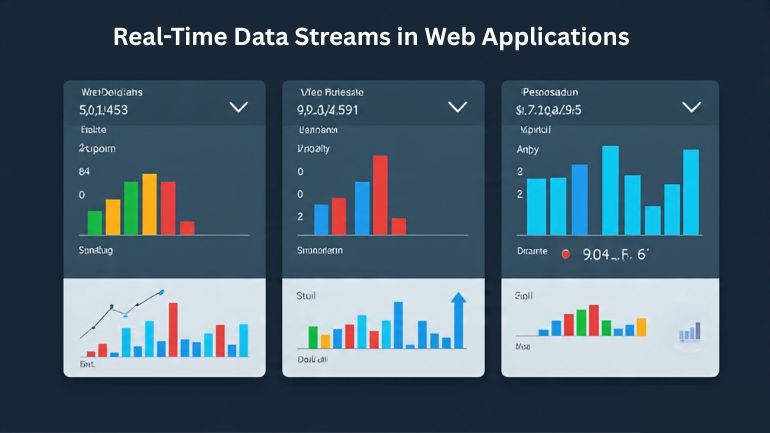Modern users expect instant updates, whether it’s a stock price changing, a live chat message appearing, or an online game reacting in milliseconds. That demand has pushed real-time data streaming into the spotlight for web developers. It’s no longer enough to periodically refresh a page or poll for changes. Businesses are investing in architectures that deliver information as it happens, reducing latency and improving user engagement. Handling real-time data requires more than simply pushing updates. It involves careful planning of protocols, message delivery guarantees, scalability, and security. Done right, it transforms a static experience into a living, dynamic interface.
Choosing the Right Protocol for Real-Time Communication
The first step in building a real-time data system is selecting the right communication method. WebSockets are the go-to for two-way, persistent connections that allow data to flow freely between client and server. Server-Sent Events (SSE) work well when updates only need to flow in one direction, from server to client, and require less overhead. For more complex use cases, MQTT can be an option, especially for IoT devices. The right choice depends on the nature of the data, the expected volume of traffic, and the need for bidirectional communication. Selecting poorly here can cause scaling headaches later.
Implementing a Message Broker for Scalability
As data volumes grow, managing real-time communication directly between servers and clients can become overwhelming. This is when message brokers like Apache Kafka, RabbitMQ, or NATS become important. They act as intermediaries that can queue, route, and deliver messages reliably. A broker allows you to decouple data producers from consumers, meaning that your web servers aren’t bogged down handling every client request in real time. Instead, producers publish events to the broker, and consumers subscribe to only what they need. This separation of concerns not only makes the system more scalable but also simplifies future expansion and maintenance.
Monitoring and Maintaining Data Integrity
One challenge in streaming systems is ensuring that the data is accurate, complete, and secure as it travels across the network. Unexpected anomalies, whether due to coding bugs, misconfigured services, or malicious activity, can degrade user trust. That’s why some development teams integrate continuous monitoring tools alongside their analytics stack. For instance, while application metrics might track performance, a managed detection and response service like Red Canary can watch for suspicious patterns in your infrastructure and alert you before small issues become full-scale incidents. The key is to have these checks running quietly in the background, detecting problems early without adding friction.
Handling Fault Tolerance and Failover
Even the best real-time systems need a plan for when things go wrong. Fault tolerance ensures that if one part of the system fails, another can take over with minimal disruption. Techniques include setting up redundant brokers, replicated databases, and multi-region deployments. A good failover strategy not only minimizes downtime but also protects against data loss during network outages or server crashes. Automatic reconnection logic in the client-side code can help the system recover quickly. Testing these failover scenarios regularly ensures that your architecture is resilient under real-world conditions, rather than relying on untested assumptions.
Optimizing for Bandwidth and Performance
Real-time data streams can put a strain on network resources, especially when dealing with thousands of concurrent connections. To keep performance high, developers often implement compression techniques, delta updates (sending only what’s changed), and rate limiting to prevent overload. Balancing speed with resource efficiency is key, particularly for mobile users with limited bandwidth. Caching frequently used data at the edge, near the end-user, can further reduce latency. Ultimately, the most efficient real-time systems are those that deliver the right data, at the right time, in the smallest possible package, without sacrificing accuracy or freshness.


Be the first to comment on "Handling Real-Time Data Streams in Web Applications"